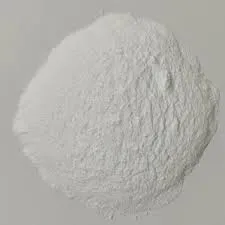Understanding Pentoxifylline Uses, Benefits, and Considerations
Pentoxifylline, a pharmaceutical compound, has garnered attention for its diverse applications, particularly in treating various medical conditions related to circulation and blood flow. As a xanthine derivative, this medication has a distinct mechanism of action that can benefit patients suffering from vascular issues.
Mechanism of Action
Pentoxifylline works by increasing the flexibility of red blood cells, which enhances blood flow by reducing blood viscosity. This mechanism is critical for individuals experiencing peripheral vascular diseases, where narrowed blood vessels reduce blood supply to limbs. By improving microcirculation, pentoxifylline helps alleviate symptoms such as pain and cramps in the legs during physical activities, a condition known as intermittent claudication.
Medical Uses
Pentoxifylline is primarily prescribed for treating intermittent claudication, which is associated with conditions like atherosclerosis. Additionally, it has been explored for its potential benefits in managing chronic venous insufficiency, diabetic neuropathy, and even certain skin ulcerations. Some studies suggest that pentoxifylline can aid in promoting wound healing and increasing blood flow to ischemic tissues, making it a valuable option in comprehensive treatment plans.
Beyond these primary uses, pentoxifylline has been investigated in various contexts. For instance, it has been considered for its anti-inflammatory properties and its potential role in treating conditions like rheumatoid arthritis. Moreover, early research indicates that it may have a positive effect on liver function in chronic liver disease, although further studies are needed to establish definitive therapeutic strategies.
pentoxifylline generic

Benefits
One of the key advantages of pentoxifylline is its favorable side effect profile compared to some other medications used to improve circulation. While patients may experience mild side effects such as gastrointestinal disturbances or headaches, serious adverse reactions remain uncommon. This makes pentoxifylline an appealing option for long-term management of chronic conditions.
Additionally, unlike various anticoagulants or antiplatelet drugs that require careful monitoring, pentoxifylline’s side effects do not generally necessitate rigorous blood testing. As a result, patients using this medication may enjoy a more convenient treatment regimen.
Considerations and Conclusion
Despite its benefits, pentoxifylline is not suitable for everyone. Individuals with severe liver disease or active bleeding disorders should exercise caution and consult healthcare professionals before starting treatment. It is essential to adhere to prescribed dosages and follow up with regular medical consultations to monitor progress and address any potential concerns.
Overall, pentoxifylline represents a valuable tool in the arsenal for managing various circulatory disorders. Its ability to enhance blood flow and promote healing makes it particularly beneficial for patients with conditions such as intermittent claudication. However, like any medication, it is crucial to use pentoxifylline judiciously under medical supervision to maximize its benefits while minimizing risks. As ongoing research continues to explore its various applications, pentoxifylline may further solidify its role in clinical practice, offering hope to many patients seeking relief from circulatory issues.

